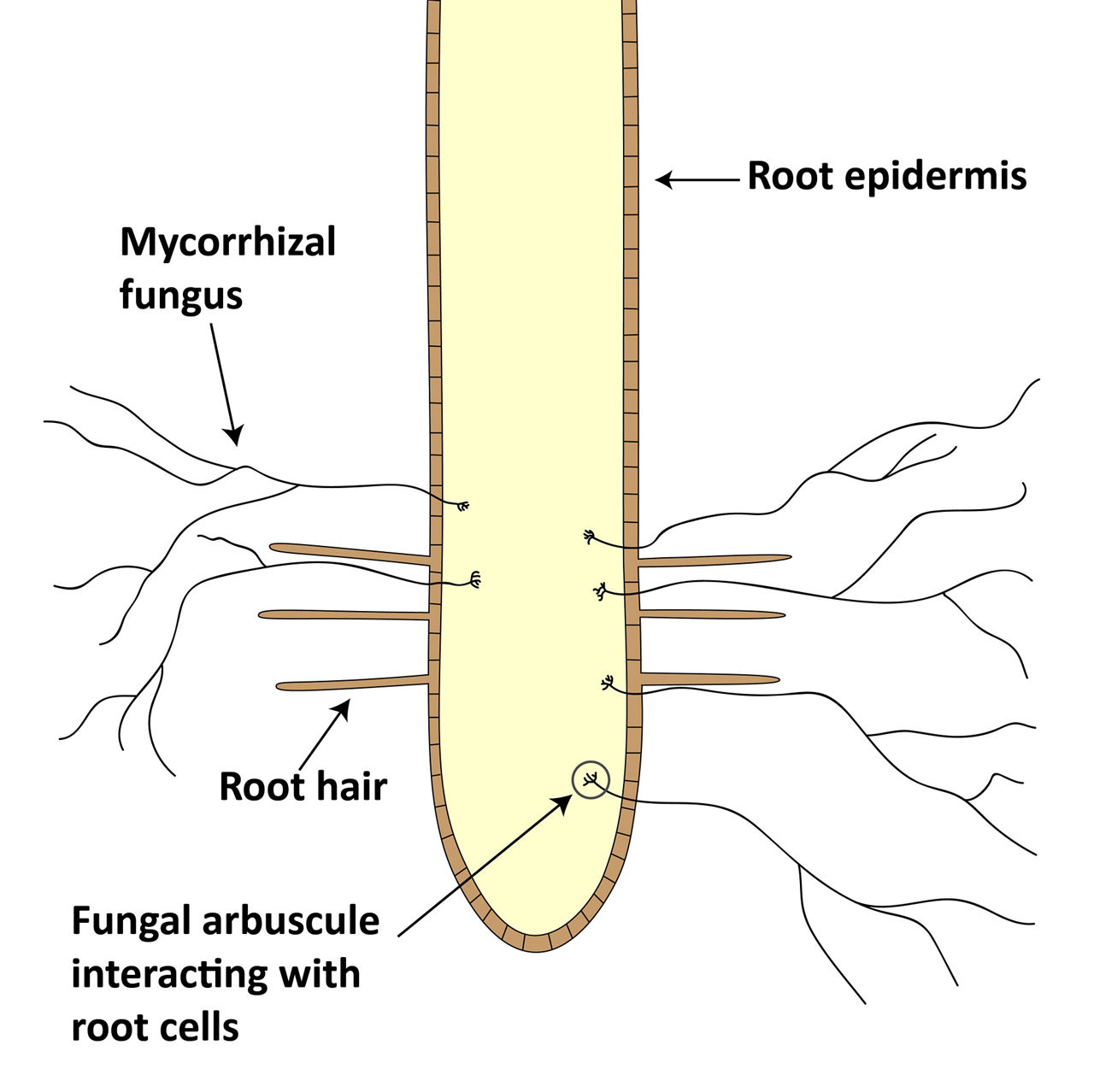3 MIN READ
Benefits of Mycorrhizae Fungi
October 29, 2020
Most agricultural plants, including corn and soybean, grow in the presence of vesicular-arbuscular mycorrhizae (VAM), which are endomycorrhizae fungi. Soils that are absent of or have reduced populations of VAM can result in the development of crop nutrient deficiency symptoms, especially for immobile nutrients such as phosphorus (P). The soil may have adequate levels of P, but it is unavailable to the crop without VAM support. Reduced VAM populations can occur when fields are flooded or have been in continuous production of non-supporting crops such as those in the brassica genus (canola, cabbage, broccoli, and others) and sugar beets. Practices that help maintain a healthy mycorrhizae population include no-till, use of cover crops, and planting crops that support mycorrhizae. Seed treatments such as BioRise® Corn Offering can help enhance mycorrhizal colonization.
The mycorrhizae can support the host plant physically and chemically. Physically, the mass of VAM hyphae increases the physical surface area that is available for water and nutrient absorption. The hyphae are smaller in diameter compared to root hairs and can grow through soil pores that are inaccessible to plant roots. The expanded reach of VAM hyphae can help reduce crop stress during drought by finding water at greater soil depths. Chemically, VAM cells excrete various organic acids that dissolve minerals in the soil rhizosphere making them available to the plant. Research has shown that the hyphae can help break down rock, which can increase the availability of nutrients such as potassium, calcium, zinc, and magnesium.2 Additionally, some VAM chemical excretions are toxic to soil pathogens, such as nematodes, and others can help provide protection to plants grown in soils with high concentrations of salt and toxic metals.
Mycorrhizae fungi also help build and maintain soil structure. Soil aggregates are held together by the hyphae growing among the aggregates and by producing a hydrophobic glycoprotein (glomalin) that acts as a glue to bind aggregates together.3
Sources:
1 Ellis, J.R. 1998. Post flood syndrome and vesicular-arbuscular mycorrhizal fungi. Journal of Production Agriculture. Vol. 11, no. 2: 200-204.
2 O’Callaghan, A.M. Mycorrhizae. Fact Sheet 01-29. University of Nevada Cooperative Extension.
3 Miller, R.M. and Jastrow, J.D. 2000. Mycorrhizal fungi influence soil structure. Chapter 1. Environmental Research Division, Argonne National Laboratory, Argonne, Illinois.
1015_S7
